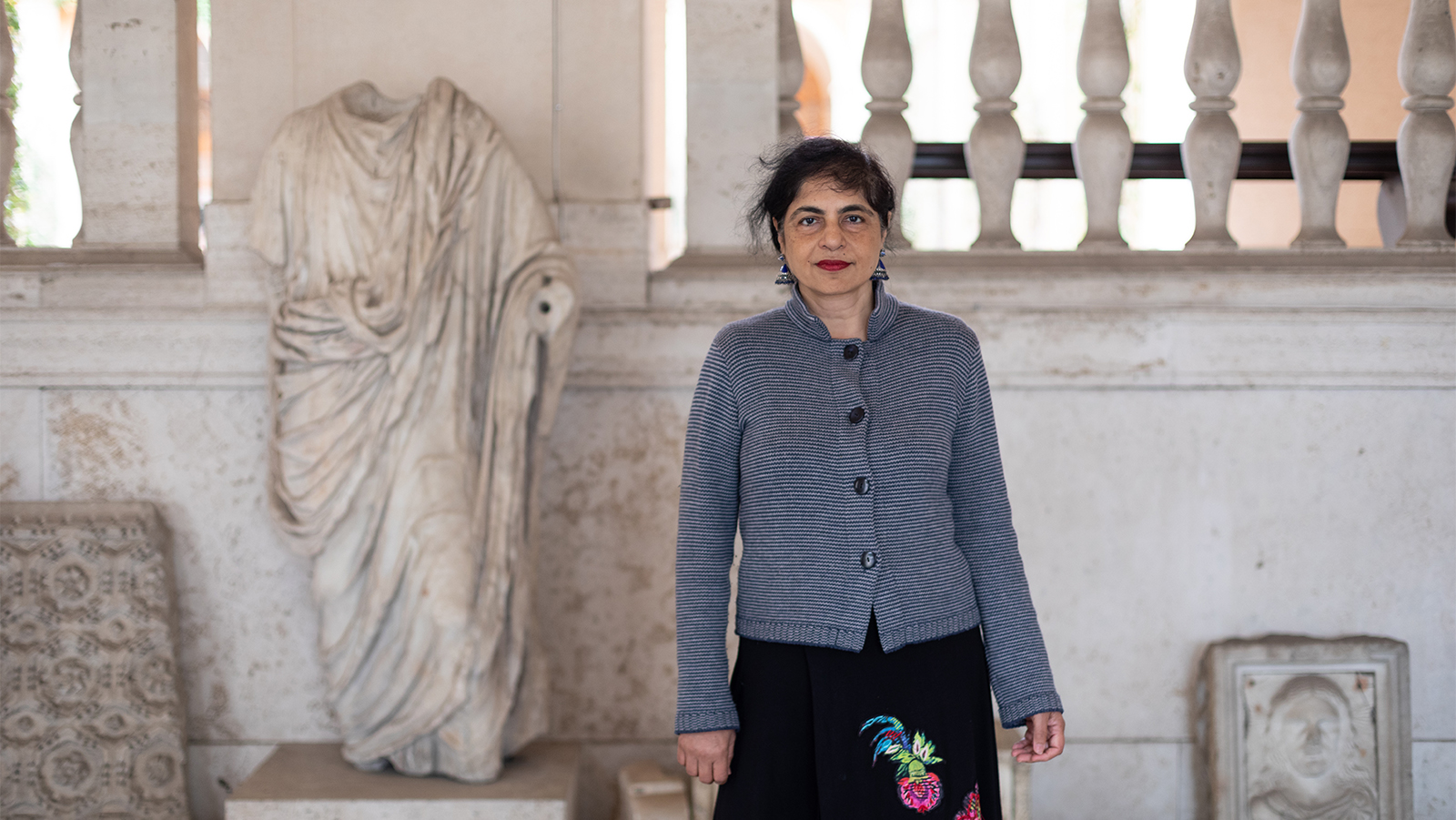
A Room of Cultural Encounters
Scroll down for English.
Le conquiste, il possesso di antichità romane e l’educazione classica hanno permesso ai britannici di immaginarsi come legittimi eredi dell’Impero romano. Con la conquista dell’India da parte della Compagnia britannica delle Indie orientali, i dignitari britannici si atteggiavano a imperatori romani, indossando toghe senatorie e copiando statue di imperatori a cavallo.
L’acquisizione e il possesso dei marmi del Partenone hanno spinto i britannici a sostenere che non fosse il popolo greco contemporaneo, ma loro stessi i veri discendenti della Grecia classica. Ovvero: una Grecia classica ridisegnata, ripulita dalle origini culturali egiziana, semitiche e di molte altre culture del sud e dell’est. Ciò che è accaduto nel subcontinente indiano durante gli scavi della particolare arte gandhariana è simile. È stata ricondotta a una visione europea con la denominazione di “arte greco-buddista”, trascurando le influenze di una miriade di altre culture. Una forma di colonialismo culturale.
Nessuna cultura è mai unica, uniforme o separata. Le culture sono se stesse, ma sempre piene di elementi estranei. Multi-culture anziché monoculture, eclettiche. In questo senso, la cultura predominante dell’Impero Romano non è strettamente europea. È intessuta di fili provenienti da tutto il mondo, come le culture Kushan, indiana, buddista o qualsiasi “toga”.
A ROOM OF CULTURAL ENCOUNTERS rispecchia le civiltà come complessi regni multiculturali. Vestito con una toga in una scultura indiana, il funzionario britannico parla non solo di Roma e della Gran Bretagna, ma anche del Buddha gandhariano e delle tradizioni indiane di indossare tessuti drappeggiati come sari, dhoti, lungi, scialli e dupatta. Allo stesso modo, a Roma si possono scoprire l’India, l’Egitto (in Africa) e altre culture.
Decolonizzare le nostre storie, i nostri musei, ci impone di riconoscere la complessità e la diversità di tutte le nostre origini, l’inventiva di tutte le culture. Solo così potremo preservare il nostro passato in tutta la sua complessità.
Biografia
Preeti Chopra è Suzanne Deal Booth Rome Prize Fellow 2023 all’American Academy in Rome. È docente di architettura e visual studies presso l’Università del Wisconsin, Madison. Si è formata come architetto (CEPT, Ahmedabad, India), architetto del paesaggio, urbanista e storico dell’architettura (University of California, Berkeley). Chopra è autrice di A Joint Enterprise: Indian Elites and the Making of British Bombay (2011). Il titolo del suo progetto all’AAR è Historic Preservation, British Monuments, and the Legacy of Ancient Rome in Modern India.
A Room of Cultural Encounters
Conquests, possession of Roman antiquities, and a classical education allowed the British to conceive of themselves as rightful heirs of the Roman Empire. With the British East India Company’s conquests in India, British worthies posed as a Roman emperor, in senatorial togas, and copied the statue of a Roman emperor on a horse.
Their acquisition and possession of the Parthenon Marbles prompted the British also to argue that not the contemporary Greek people, but they themselves were the true successors of classical Greece. That is: a redesigned classical Greece, rinsed free of its origins in Egyptian, Semitic, and many other cultures from the south and east. What happened in the Indian subcontinent during the excavation of distinctive Gandharan art is similar. It was taken back to a European understanding by naming it “Greco-Buddhist art,” neglecting the influences of myriad other cultures. A form of cultural colonialism.
No culture is ever singular, uniform, or separate. They are themselves, but always full of foreign elements. Multi- instead of monocultures, eclectic. In that sense: the predominant culture of the Roman Empire is not strictly European. It is woven with threads from all around, like Kushan, Indian, Buddhist cultures or any “toga.”
A ROOM OF CULTURAL ENCOUNTERS mirrors civilizations as complex multicultural realms. Clothed in a toga in a sculpture in India, the British official speaks to me not only of Rome and Britain, but to the Gandharan Buddha, and to Indian traditions of wearing draped cloth such as a sari, dhoti, lungi, shawl, and dupatta. In the same way one can discover India, Egypt (in Africa), and other cultures in Rome.
Decolonizing our histories, our museums, requires us to recognize the complexity and diversity of all our origins, the inventiveness of all cultures. Only when we do this can we preserve our pasts in all their complexity.
Biography
Preeti Chopra is the 2023 Suzanne Deal Booth Rome Prize Fellow in Historic Preservation and Conservation at the American Academy in Rome. She is professor of architecture and visual studies at the University of Wisconsin, Madison. She trained as an architect (CEPT, Ahmedabad, India), landscape architect, urban planner, and architectural historian (University of California, Berkeley). Chopra is the author of A Joint Enterprise: Indian Elites and the Making of British Bombay (2011). The title of her project at AAR is Historic Preservation, British Monuments, and the Legacy of Ancient Rome in Modern India.